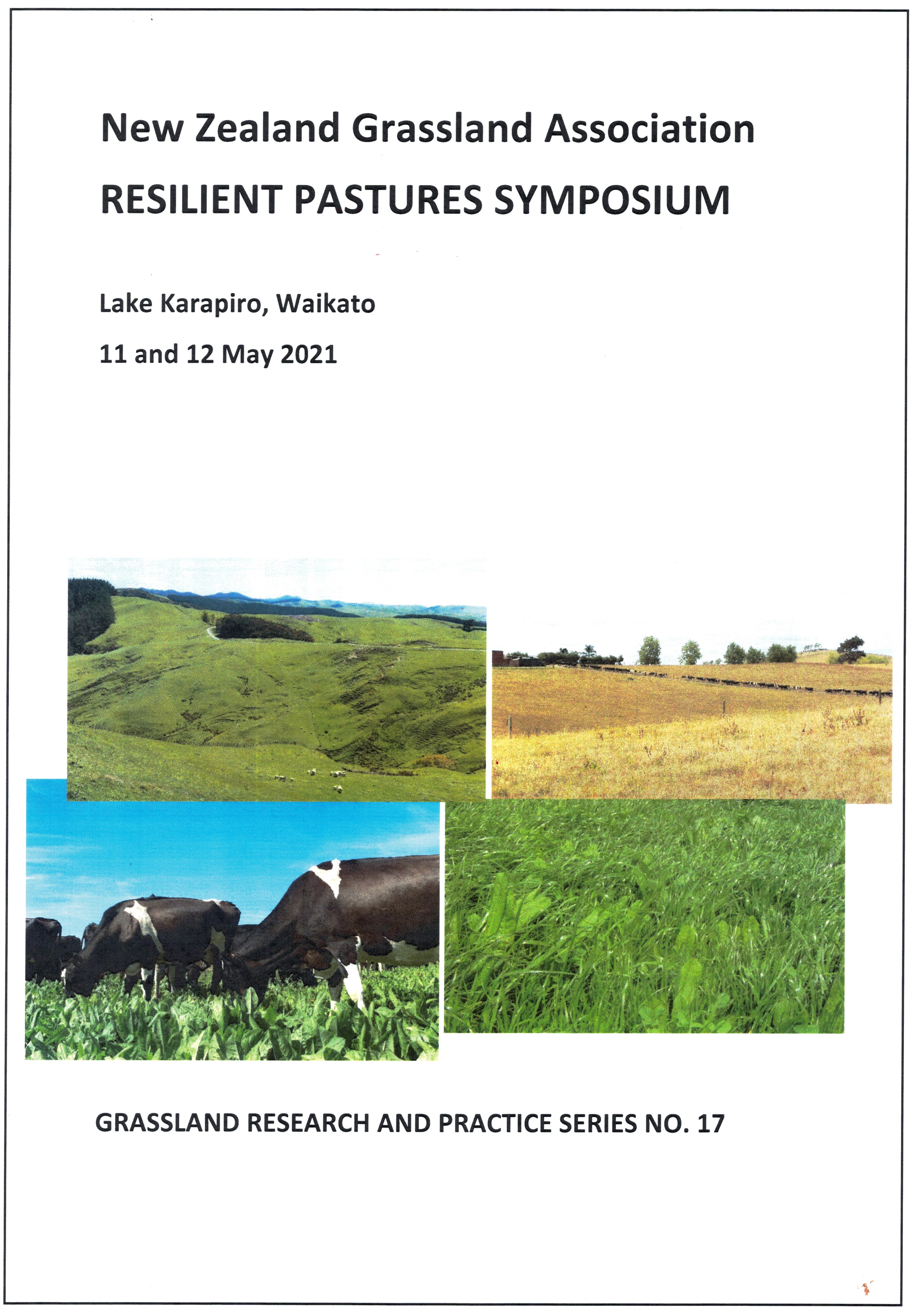Plant diversity with species drilled in the same or alternate rows enhanced pasture yield and quality over 4 years
DOI:
https://doi.org/10.33584/rps.17.2021.3470Keywords:
complementarity, interspecific interactions, multi-species, sowing methodAbstract
This paper reports on the effects of plant species diversity and sowing method on pasture yield and quality. Nineteen seed mixtures of perennial ryegrass (PR), plantain (Pl), white clover (WC) and red clover (RC) were sown on 26 March 2015 at Lincoln University. Four mixtures of PR, Pl and WC were repeated with species separated in alternate drill rows. Plots were grazed by sheep and irrigated. After 4 years, a mixture with 25% of each species based on seed count – equivalent to 7.5 kg PR, 5.6 kg Pl, 1.9 kg WC and 4.4 kg RC (19.4 kg total seed)/ha – produced an optimal balance of increased total yield (17.44 t DM/ha/yr), weed suppression (0% of total yield), metabolisable energy (11.4 MJ/kg DM) and crude protein (19% of DM). Sowing method had no effect. Plant diversity enhanced pasture production through positive interactions and identity effects among the legumes (WC and RC) and non-legumes (PR and Pl). The strength of interactions between species depended on the identity and relative abundances of the species involved. The diversity effects occurred alongside shifts in species relative abundances over time. This study demonstrated an experimental basis for the evaluation of multi-species pasture mixtures.
Downloads
Published
How to Cite
Issue
Section
License
Copyright
This work is licensed under a Creative Commons Attribution-Non Commercial-NoDerivatives 4.0 International License. Rights granted to the New Zealand Grassland Association through this agreement are non-exclusive. You are free to publish the work(s) elsewhere and no ownership is assumed by the NZGA when storing or curating an electronic version of the work(s). The author(s) will receive no monetary return from the Association for the use of material contained in the manuscript. If I am one of several co-authors, I hereby confirm that I am authorized by my co-authors to grant this Licence as their agent on their behalf. For the avoidance of doubt, this includes the rights to supply the article in electronic and online forms and systems.


